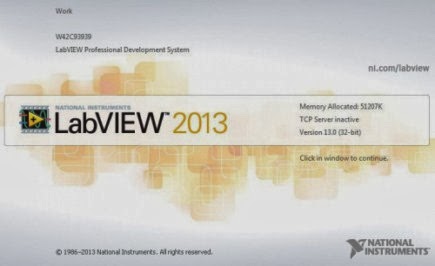

Once the download is done, navigate to where your downloads are and right-click the newly downloaded file and click “ Run as Administrator”. Now, when you click “I am a current user of the LabVIEW Development System”, your download should begin.

If you had to sign into an account, you will be taken back to the page shown in the screenshot above. If you do not have an account, you’ll want to make an account. Additionally, if you are not signed into your user account, you will be asked to sign in. Click “Continue” once you’ve selected LabVIEW 2017 from the drop-down. If you are asked this, choose “LabVIEW 2017” from the drop-down. Once you click on the link, you might be asked what your current version of NI LabVIEW is. NOTE: If you do not see these options, you may need to login to the website by using the Login option at the top-right of the page. Click the link that says “I am a current user of LabVIEW Development System”.

On that page, you’ll see two options listed.
#Ni labview 2013 software#
You can download the software from this page. You can find more detailed system requirements for LabVIEW and add-on modules on the system requirements page from NI. If you have a computer that was made in the last 5-8 years, you should be fine. Regardless, it’s important to verify your hardware to be sure you can run the software before purchasing it. Overall, these requirements are not high. Pentium 4M (or equivalent) or later (32-bit) Pentium 4 G1 (or equivalent) or later (64-bit) Pentium 4M/Celeron 866 MHz (or equivalent) or later (32-bit) Refer to the below table to see the system requirements: Windows NI LabVIEW 2018 System Requirementsįirst, you’ll want to make sure your computer can run NI LabVIEW 2018. NI LabVIEW is compatible with Mac and some Linux distributions, but they will not be covered in this guide. Note: This guide is for Windows users only. This guide will walk you through the steps for downloading and installing the product. National Instruments recently released LabVIEW 2018.


 0 kommentar(er)
0 kommentar(er)
